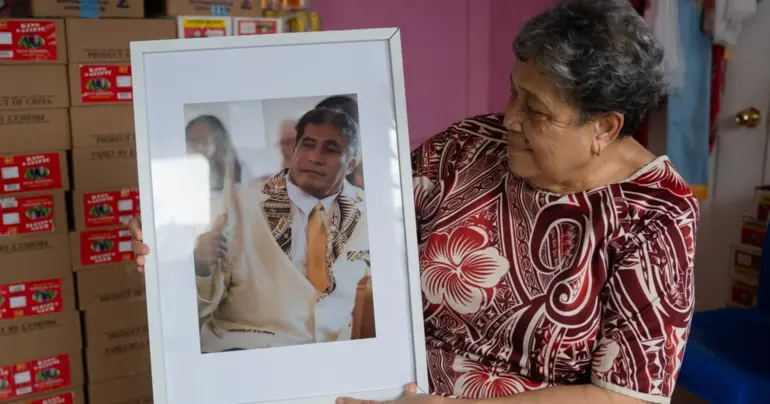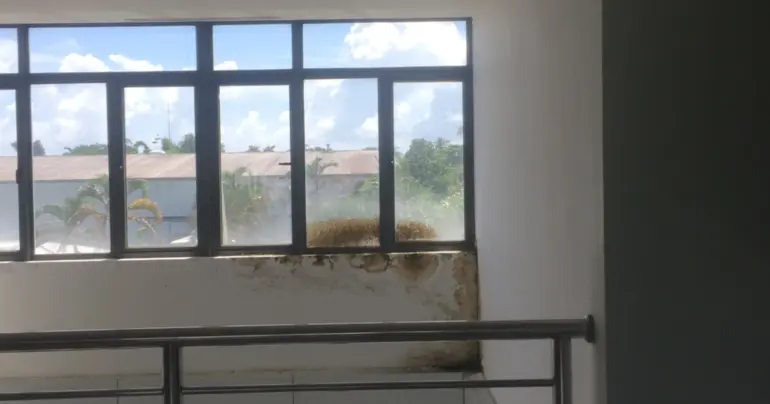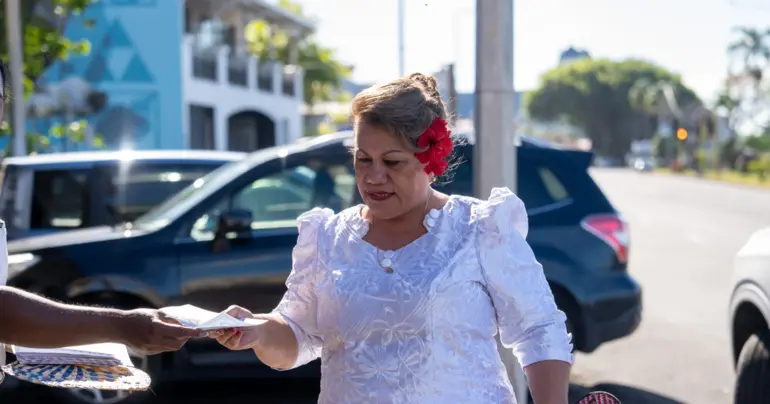Top W.H.O. official cautions against stigmatisation
 By Sapeer Mayron
•
29 November 2020, 11:00AM
By Sapeer Mayron
•
29 November 2020, 11:00AM
The World Health Organisation (W.H.O.) Representative to Samoa, Dr. Rasul Baghirov, has cautioned against barring people previously infected with COVID-19 from Samoa, saying they pose no threat and should not be stigmatised against.
He said previously infected people, who have recovered, are no longer infectious and there is no reason to bar their entry to Samoa.
His comments come following revelations by Prime Minister, Tuilaepa Dr. Sailele Malilegaoi, that both men who tested positive for COVID-19 this month had been sick before, information not previously known to authorities.
Final confirmation will be made through blood tests conducted in Wellington’s reference laboratory, but Dr. Baghirov said all signs point to both cases being inactive, historical cases which pose no threat of infection to the community.
“I don’t want to see these people being stigmatised. Anyone can get sick, but people recover. It is not the end of the world, you cannot be penalised for being sick,” he said. “These people are actually less risk to the population.”
Speaking on Radio 2AP on Friday evening, Tuilaepa said Samoans will now be obligated to declare whether they had COVID-19 in the past, and warned he plans not to let previously positive people into the country.
“We will not allow anyone who has a history or has been tested positive before with COVID-19 to enter Samoa. We will monitor that area closely, to make sure that there will be no repetition of the situation we are in at the moment,” Tuilaepa said.
Asking passengers to declare whether they have previously had the coronavirus will help avoid testing confusion but there is no medical basis on which to stop them from entering the country, Dr. Baghirov said.
“From the medical perspective a person that has been sick and is fully recovered and testing negative, and not in the active phase of disease transmission is a normal person.
“They are a person who is not a threat to the community.”
Quite unhelpfully, such a rule might make people less truthful, as the global coronavirus situation worsens and Samoans abroad grow more anxious to get home to safety.
“Obviously if you are desperate to go home, it creates a sort of situation where people may not want to disclose and try to hide, this is not an entirely impossible situation,” he said.
With more people getting sick with COVID-19 and actually recovering, the likelihood of those people making it to Samoa grows. But they do not carry risk, he said.
“In fact, as more and more people around the world get infected and recover, the number of people who have antibodies will grow.
“It is quite commonplace that people who recovered still carry fragments of the virus, elements of DNA, and these fragments can be identified by tests.
“It doesn’t mean this person has an active form of infection, they are not contagious.”
Globally, there have been 61.5 million cases of COVID-19, of which 39.3 million have recovered and 1.44 million have died.
Despite the efforts of many, cases in several countries continue to skyrocket. The United States of America has recorded more than 24 days in a row of 100,000 new cases daily, with many fearing hospitals are stretched beyond capacity.
On Thanksgiving Day alone, 90,481 people were hospitalised, according to the Covid Tracking Project hosted by The Atlantic.
On Friday, Tuilaepa said the two men who tested positive – a sailor returning from Italy and a 70-year-old man returning from Australia, who both transited through New Zealand – did not disclose their previous infections, which were picked up by the polymerase chain reaction (P.C.R.) testing.
“What happened was, these men did not inform our (health) officials that they were tested positive with COVID-19 before,” he said.
Dr. Baghirov said there is a chance that the two may have had mild or asymptomatic infections of the virus and never sought testing when they were ill.
This is considerably more likely in the younger seafarer than in the older man who is also hypertensive, but possible nonetheless, he said.
“We know that a number of cases, majority of cases are mild or asymptomatic. It is entirely possible that the person is basically surprised that he or she has a positive result because they may not recall any illness in recent months.
“The person may genuinely believe there was no infection, especially in younger people. With age, and in particular with hypertension, the likelihood of getting some more serious symptoms increases.”
But he urged people not to hide their medical history in any case.
“It is absolutely important that everyone collaborates, because of course if you get sick there is no need to hide it. It’s a sickness, it is not a crime. Anyone can get it.
“But if you travel you do need to reveal to authorities your history with any flulike disease.”
In his role as the W.H.O. representative, Dr. Baghirov may only advise the Government but he urged the leadership not to stigmatise people who get sick.
Most people infected globally do recover, and gain immunity to the virus (though it is not yet known for how long). They do not remain infectious, however.
“In fact, this person is least likely to get infected again. Reinfection is an extremely rare event,” Dr. Baghirovi said.
P.C.R. machine testing can pick up historical cases of the virus under certain conditions, which explains how the two men – if they are in fact historical cases – could have tested negative several times before a test found remnants of the virus in their swabs.
If the P.C.R. machine takes longer to generate a result from the swab, this can indicate there is a low viral load on the swab which might mean the case is old, or extremely new.
“The P.C.R. test does not only find the active virus, it may also detect fragments of the genome. It is entirely possible that a person can still show a positive result.
“As time goes by and the body is killing the virus, the P.C.R. test will show a low positive. It will take time for it to find those fragments, and eventually it will detect no virus.”
The purpose of sending blood samples to be tested is to find antibodies in the blood, which are a sure sign that the person has been previously infected with COVID-19.
Another factor pointing towards the likelihood of the cases being historical is that neither the sailor’s roommate nor the 70-year-old’s wife have tested positive.
“We know that out of all the passengers on the plane only two so far were positive-negative, as we call it, and the second one was positive only before the release from quarantine,” he said.
“It is unlikely that either of these cases are active cases. One would expect that transmission is happening somewhere on the way from New Zealand to Samoa or in quarantine, because an active case would transmit among people staying together in close contact, who are not necessarily always protecting themselves with a mask.
“This seems to be increasingly impossible because as time passes by we don’t have more active cases coming up.
“We cannot confirm one way or another because we don’t have access to all the information. And in fact even if you have access to all the information sometimes those judgements are extremely difficult.”
Tags
 By Sapeer Mayron
•
29 November 2020, 11:00AM
By Sapeer Mayron
•
29 November 2020, 11:00AM











